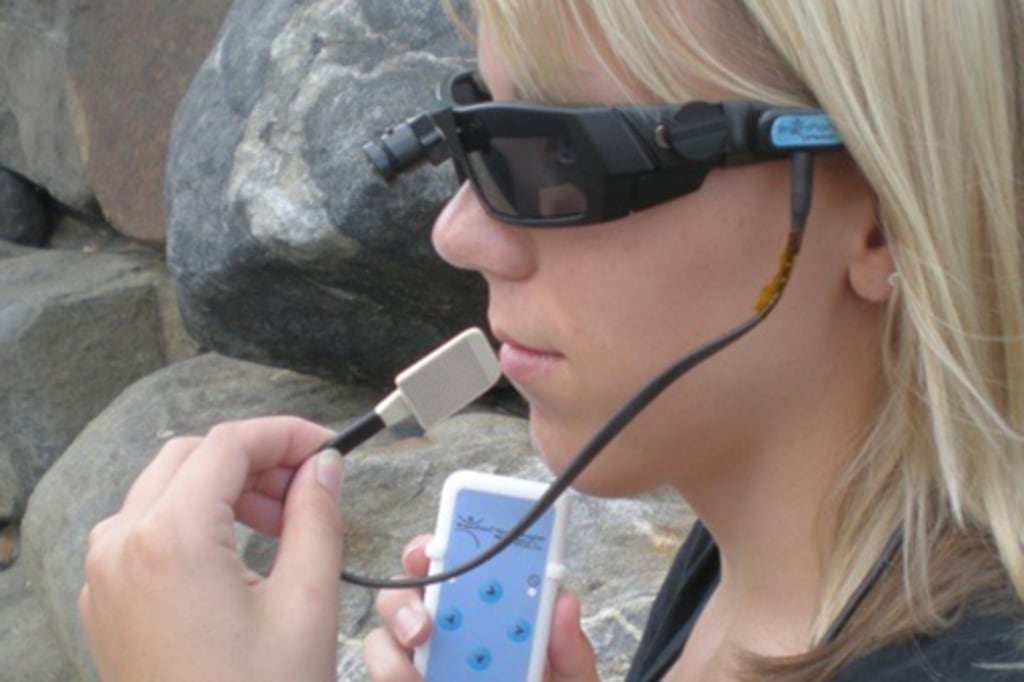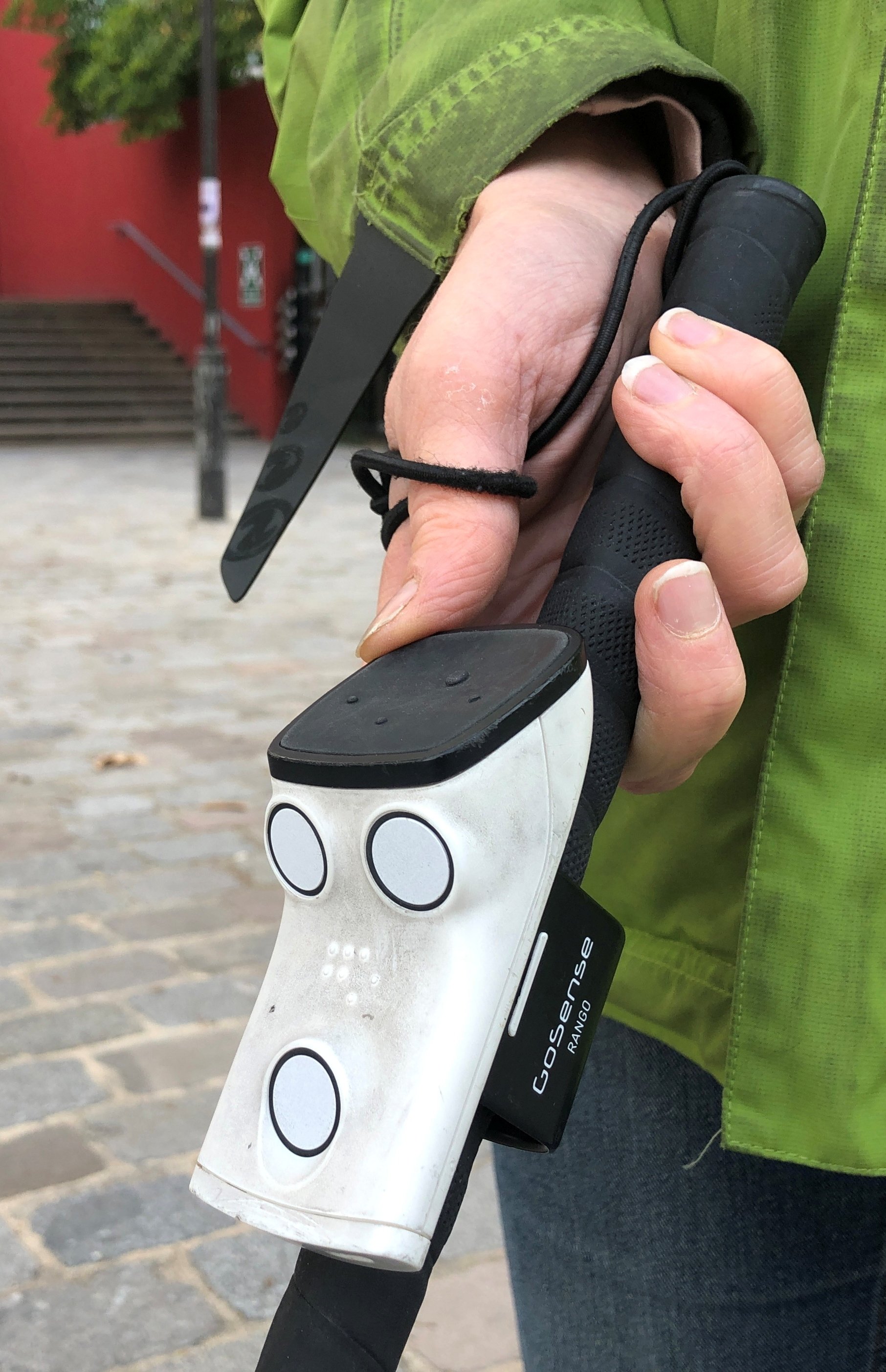Enhancing Lives With Advanced Assistive Gadgets for the Blind
The combination of innovative assistive gadgets for the blind is transforming how people experience their environments and connect with their communities. What does this development mean for the future of assistive technology and its function in equipping individuals?
Review of Assistive Gadgets
Assistive tools for the blind encompass a varied variety of tools and innovations created to improve freedom and enhance the lifestyle for individuals with visual impairments. These tools cater to various needs, from navigating and flexibility to communication and day-to-day job monitoring.
One of the key categories of assistive tools consists of movement aids, such as white canes and guide dogs, which aid individuals navigate their surroundings securely. Electronic traveling aids, furnished with sensors and audio responses, likewise play a significant role in movement improvement.
In addition, tools that assist with day-to-day living tasks, such as flexible kitchen area devices, Braille tags, and chatting watches, empower people to perform jobs separately. Communication aids, consisting of display viewers and Braille displays, assist in access to information and allow people to involve effectively with the digital globe.
Moreover, low-tech options like amplifying glasses and large-print products stay vital for many users. Jointly, these assistive gadgets serve not only as sensible tools but likewise as vital enablers of freedom, promoting greater participation in a globe that typically focuses on sighted experiences. Their combination right into day-to-day live is essential for promoting inclusivity and enhancing total wellness for those with visual disabilities.
Innovative Technologies in Usage
Innovation in innovation has dramatically transformed the landscape of devices readily available for individuals with aesthetic impairments. Amongst one of the most notable improvements are wise glasses incorporated with increased fact, which offer real-time navigating support and item recognition. These gadgets leverage advanced cams and artificial knowledge to deliver acoustic signs, improving the user's spatial awareness and autonomy.
Additionally, mobile applications have actually become effective sources, making it possible for individuals to determine money, checked out message out loud, and navigate unknown settings via spoken instructions. Tools such as Braille screens and refreshable Braille gadgets continue to develop, using smooth connection with mobile phones and computer systems, thereby improving interaction and accessibility to information.
Wearable technology, including smartwatches equipped with voice-activated features, even more encourages users by helping with fast accessibility to alerts and alerts without requiring visual involvement. Responsive maps and 3D printing are also acquiring grip, using tangible depictions of rooms that help in alignment and mobility training.
Jointly, these cutting-edge innovations not only improve the lives of aesthetically impaired people however likewise foster greater freedom, inclusivity, and interaction with the more comprehensive neighborhood, therefore improving perceptions of ease of access. (Screen readers for the blind)
Personal Stories of Empowerment
Empowerment usually emerges from personal experiences that highlight the transformative impact of technology on people with aesthetic problems. Take, for example, the story of Sarah, a young artist that reclaimed her passion for paint through the use of a wise cane furnished with barrier detection. This gadget not just promoted her flexibility but instilled their explanation a newfound confidence, enabling her to browse public rooms individually and seek her innovative ventures.

These stories emphasize the profound results that advanced assistive gadgets can carry every day life. By allowing individuals to get over obstacles, innovation promotes a feeling of freedom and self-respect. Such go to this site empowerment tales function as a testimony to the potential of advancement, highlighting exactly how the right devices can dramatically boost lifestyle and open doors to brand-new possibilities for those with visual disabilities.
Advantages of Advanced Solutions
Exactly how can progressed options fundamentally boost the lives of individuals with aesthetic disabilities? The combination of advanced innovation right into assistive tools significantly transforms everyday experiences for those impacted by vision loss. These advanced remedies offer unmatched freedom, making it possible for customers to browse their environments with self-confidence. Gadgets such as smart walking canes equipped with sensors, navigating applications, and wearable technology are made to give real-time comments, boosting spatial understanding and minimizing the threats related to movement.
Additionally, advanced assistive modern technologies foster social incorporation by assisting in interaction and interaction. Voice-activated tools and applications permit individuals to gain access to info and engage with their environments independently, damaging obstacles that previously hindered their engagement in educational, professional, and social setups.
On top of that, the personalization and versatility of these options provide to the diverse needs of users, thereby enhancing their total top quality of life. Boosted performance, such as object recognition and text-to-speech capabilities, encourages individuals with aesthetic problems to do tasks that they may heart glasses have once located testing. Ultimately, progressed assistive innovations not only boost freedom and safety however likewise promote dignity and self-respect, allowing individuals to lead fulfilling lives.
Future Fads in Assistive Technology
As technology remains to develop, the landscape of assistive devices for the blind is poised for impressive improvements that will certainly even more enhance availability and independence. Arising trends in assistive innovation indicate a change toward boosted assimilation of expert system (AI) and artificial intelligence, allowing devices to adjust to specific user requires in real-time. These technologies are expected to assist in more instinctive navigation systems that can identify challenges and offer audio comments, dramatically boosting exterior movement.
Furthermore, the growth of wearable technology, such as wise glasses equipped with increased truth, will certainly allow users to receive contextual details concerning their environments, thus enriching their spatial recognition. Improvements in haptic technology promise to produce tactile feedback tools, allowing individuals to view details with touch, improving knowing and communication with their atmosphere.
Telecommunication advancements are additionally leading the way for remote support solutions, where experienced experts can give guidance through video telephone calls, making certain support is conveniently easily accessible. As these fads unravel, the future of assistive tools for the blind will certainly promote greater autonomy, encouraging individuals to navigate their globe with confidence and ease.

Verdict
The assimilation of advanced assistive gadgets for the blind stands for a substantial advancement in promoting self-reliance and enhancing lifestyle. By utilizing innovative innovations, these devices encourage customers to navigate their settings with greater self-confidence and freedom. As the field remains to advance, continuous r & d will likely generate much more sophisticated options, even more changing the lived experiences of people with aesthetic problems and advertising a higher sense of addition within culture.
The integration of advanced assistive devices for the blind is transforming exactly how individuals experience their surroundings and engage with their neighborhoods. The assimilation of sophisticated technology into assistive gadgets significantly changes everyday experiences for those affected by vision loss.As modern technology continues to evolve, the landscape of assistive devices for the blind is poised for remarkable advancements that will additionally boost ease of access and independence. Emerging patterns in assistive innovation suggest a change towards raised integration of man-made intelligence (AI) and maker understanding, making it possible for tools to adjust to private user needs in real-time.The combination of sophisticated assistive devices for the blind represents a considerable innovation in promoting independence and boosting top quality of life.